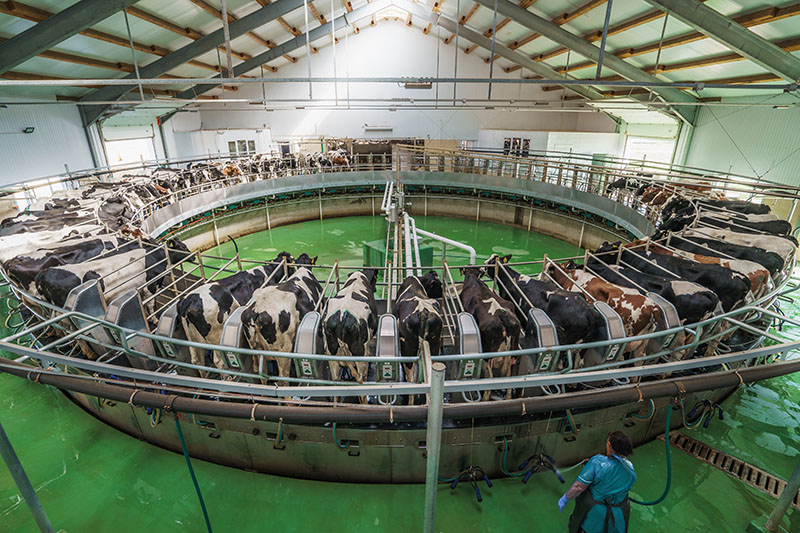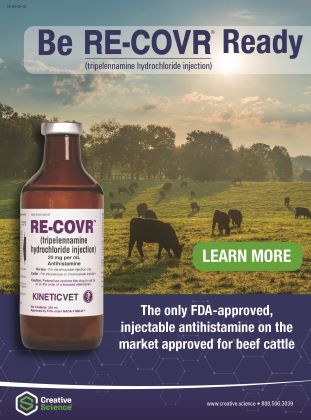Genomic Testing and Modern Dairy Farming

There is no questioning the efficiency of America’s dairy herds. The industry-wide embrace of data to drive decision making has been a large part of this accomplishment.
A prime example of this is genomic testing, a key tool that has allowed farmers and other industry professionals to make optimal mating decisions that have far reaching impacts.
Genomic testing lends itself to farmers in a couple different ways. It allows producers to identify both unwanted genetics as well as desired genetics. Data obtained from the DNA level helps you pair your heifers and cows with the right sire to improve the resulting progeny.
Marco Winters, head of animal genetics for the Agriculture and Horticulture Development Board (AHDB) in the United Kingdom, says this represents a massive difference in profit potential between the best and worst herds.
He notes, “Improving genetics is probably the cheapest and most sustainable way of making long-term improvements to any herd, and when you’re using a genetic index which has been developed specifically to increase profitability, this feeds straight through to a farm’s bottom line.”
While everyone has some familiarity with genomics at this point, it is by no means the only driver of mating decisions and continues to generate discussion and controversy. And even as technology advances, cost can still be a barrier to some operations.
Genomic testing improvements through time
Genomic testing first became commercially available in 2008 for dairy producers in the United States.
Annual genetic gain skyrocketed The annual gain of $36.90 per year from 2004 to 2009 rose to $83.33 per year from 2010 to 2022.
While sire selection initially drove genetic gain, the widespread testing of females is now making significant inroads each year. From 2008 to 2015, the U.S. dairy industry collectively ran 1 million genomic tests through the Council on Dairy Cattle Breeding (CDCB). The second million benchmark was reached in just 26 months (July 2017).
Is testing really worth it?
Genomic test results can provide a wealth of information, but focusing on the data most relevant to your herd’s goals will help you get the most from the investment.
A good place to start is the Net Merit Dollars (NM$), the most universally implemented index across all major dairy breeds. NM$ combines more than 40 traits and considers multiple metrics and efficiencies based on U.S. dollars. This index was created by the U.S. Department of Agriculture Animal Genomics and Improvement Laboratory (AGIL) and is published by the CDCB.
“For the U.S. dairy industry, that’s a $329 million annual net gain when extrapolating this $70 annual gain per female across the annual U.S. dairy heifer calf crop, where roughly half the 9.4 million cows have a heifer calf each year,” writes Corey Geiger in Dairy Cattle Genomics is Quietly Improving Sustainability, a CoBank Knowledge Exchange research report.
Backed by proven science and a wealth of statistics, commercial dairy farms bought into genotyping and began to heavily test heifers at birth to identify animals that would make the best replacements. Some of the positive outcomes of this genetic selection include less methane production, a smaller carbon footprint, and less feed required for each unit of milk.
Considering all these factors helps producers make informed herd selections, ensuring the top-performing animals stay at their peak while minimizing low performers or outliers.
By using genomic testing to identify animals that fall short of desired targets early, producers can strategically manage their herds to achieve goals like improved milk quality, lower somatic cell count, better udder health, and reduced antibiotic use.
What does the future hold?
While the science has grown by leaps and bounds, the sky’s the limit in terms of opportunity. As researchers continue to evaluate traits and analyze the information being collected, additional tools will become available for producers to utilize in decision making.
We have already seen how genomic testing has been put to work in Jersey herds to breed herds that are exclusive or nearly exclusive for A2A2 milk. As we continue to develop the database there is the potential to develop other niche markets that enable dairy producers to capitalize on trends and consumer preferences.
As more results become available we can continue to be more efficient and utilize it for tracking of methane and carbon footprint to better meet the push from those outside of the industry.
According to AHDB, this means farms that test can expect to have shorter calving intervals and better non-return rates along with other fertility improvements.
“Genomic testing of females was actually introduced to UK producers in 2012, and it is interesting to plot progress in the run-up to this date,” said Winters. “For FI (feed intake) in particular, this shows the worst herds today – which are not engaged in genomic testing – were actually the best, back in 2005.”
Genomic testing has become an essential tool in the global dairy industry, empowering producers to make more informed mating decisions and align their herds with specific production and performance objectives. By assessing an animal’s genetic potential, producers can strategically enhance traits such as milk yield, feed efficiency, and overall herd health. As the industry evolves, genomic testing is poised to become a near necessity for those striving to remain competitive.
To date, over 8 million U.S. dairy animals have been genotyped—a noteworthy milestone especially when compared to other livestock species.
U.S. dairy farmers have learned how to utilize genetic testing to focus on key traits that drive profitability and sustainability, such as milk production and quality, feed efficiency, reproduction and health. They have developed a national dairy herd that is the envy of the world from a genetics standpoint.
By Jaclyn Krymowski for American Dairymen




